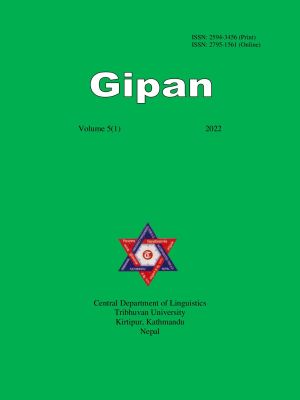Language Maintenance and Shift in The Majhi Community
DOI:
https://doi.org/10.3126/gipan.v5i1.49539Keywords:
language contact, language maintance, language shift, bilingualismAbstract
This paper evaluates the knowledge of languages and domains of language use to investigate the factors and forces responsible for language shift (LS) in the Majhi community. The data used are solely based on Chalise (2014). The community became bilingual in Majhi and Nepali several generations ago. A small number of people have knowledge of English, Hindi, etc., but they do not use them in daily life conversations. The patterns of Majhi language competence and its use in different domains in different generations indicate that there was a stable bilingualism in the past, but a notable degree of language shift began around four decades before, and it has been accelerating since then. We do not find any vital changes in the essences of personal factors. But the essences of group factors have been changed because of modernization and globalization. In the last three decades, the nation has adopted a favorable policy for minority languages, but LS has accelerated in this community. It suggests that language policy was unable to withstand the forces of modernization and globalization. We cannot deny modernization and globalization therefore it is our challenge to find out the ways to strengthen language maintenance (LM) in the context of modernization and globalization.
Downloads
Downloads
Published
How to Cite
Issue
Section
License
This license enables reusers to distribute, remix, adapt, and build upon the material in any medium or format for noncommercial purposes only, and only so long as attribution is given to the creator.

